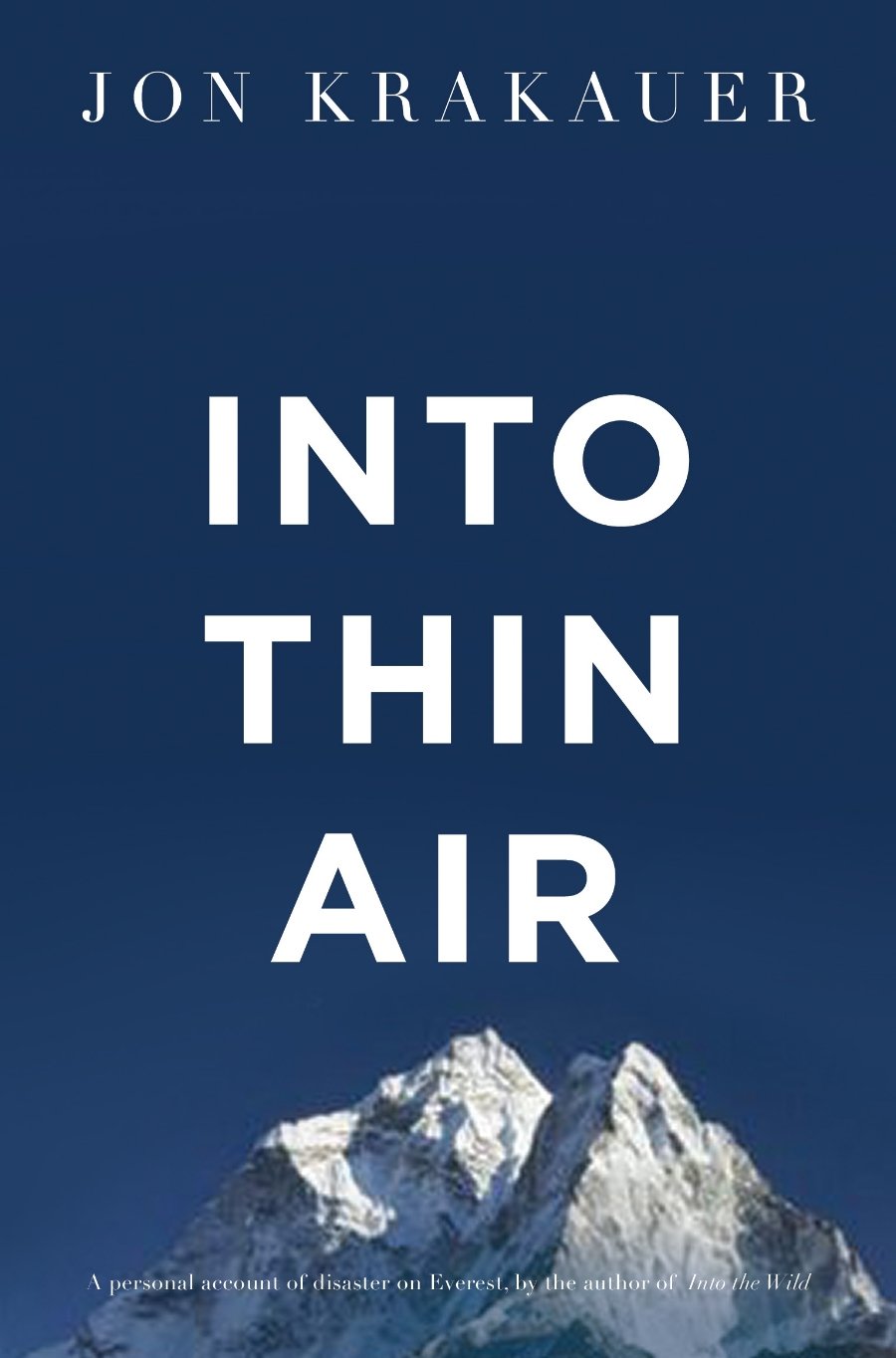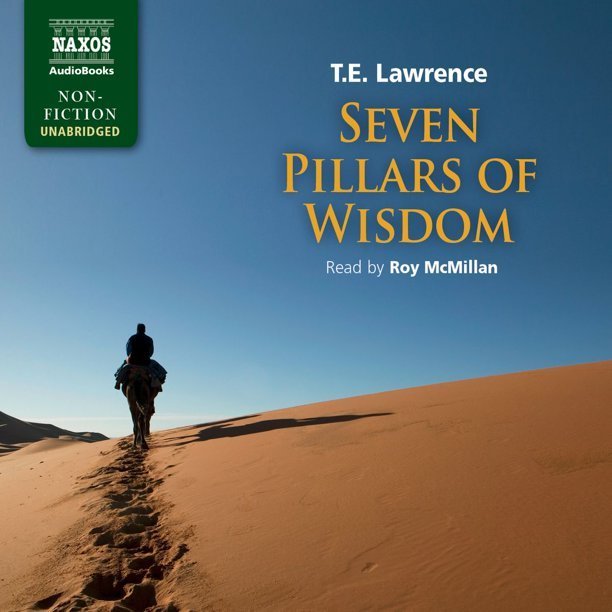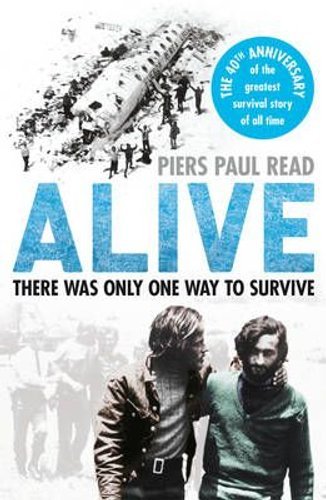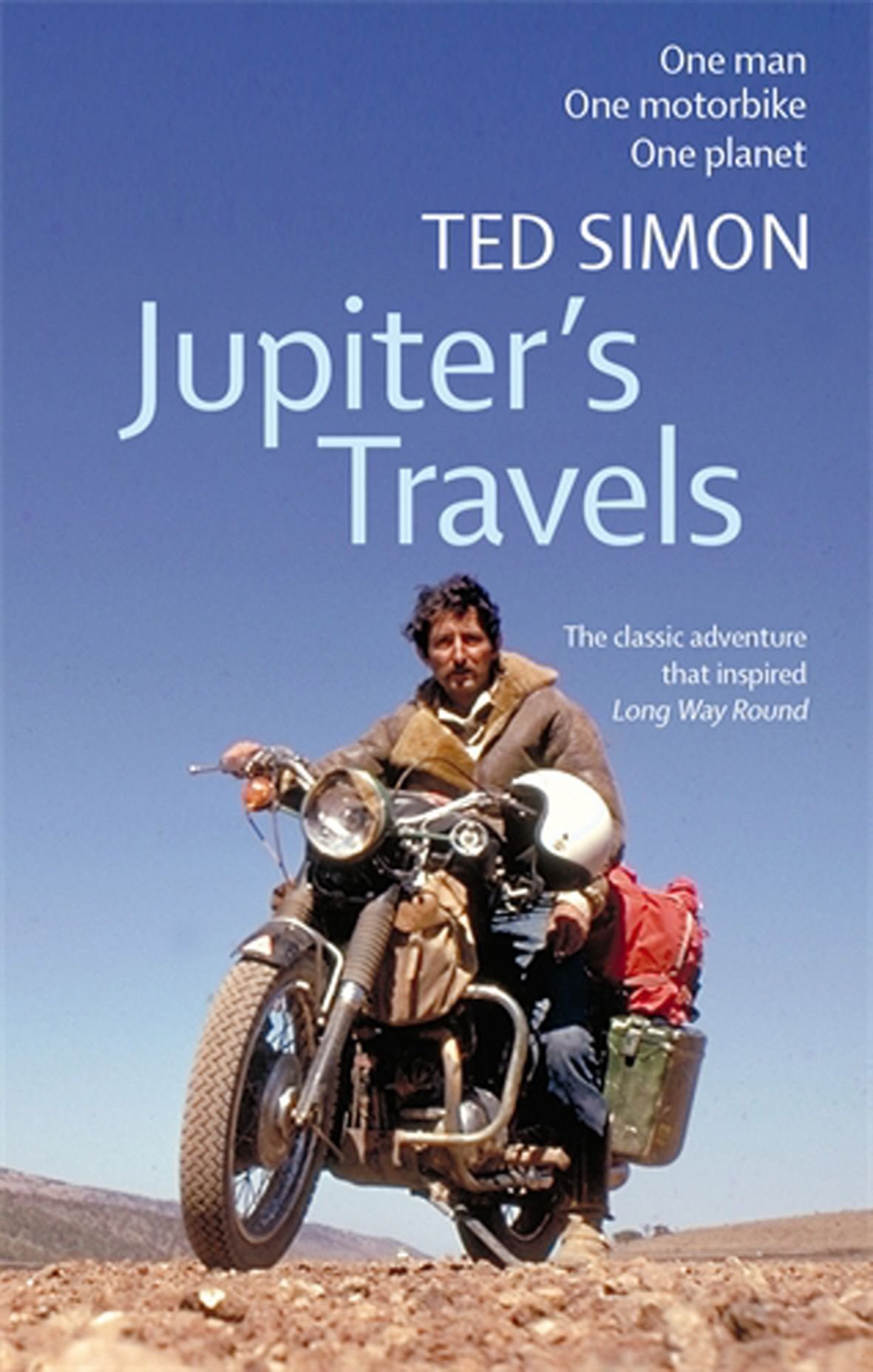The 10 Greatest Travel-Adventure Books Ever
Traveling is wonderful, but there are some places you simply can’t explore because time has left them behind. Luckily we have writers, adventurers and books. Over the years I’ve read a few. These are my 10 favorites. Each one changed the way I looked at the world. My guess is they’ll change your life too.
If you have a favorite travel book you’d like to add to our Vagabond list of classics, drop us a comment or send us an email and we’ll happily share them!
10. Into Thin Air - By John Krakauer
Despite being a true story about a misbegotten group of tourists attempting to climb the summit of Mt. Everest, John Krakauer’s book often leaves even fine novels in the literary dust. The story he tells rises, like the great peak itself, slowly, and then builds to a remarkable climax. Each of the characters is brought alive by Krakauer’s careful and detailed descriptions as they make their way upward; their backstories carefully tossed like seeds throughout the book so that when the climax (or multiple climaxes) arrive, the effect is horrifying, sad, exhilarating and satisfying all at the same time. The research Krakauer did to write the book places him in the pantheon of great narrative non-fiction writers like Tom Wolfe and Truman Capote. If you haven’t bought it, do so now and enjoy every minute. On Barnes & Noble.
9. Seven Pillars of Wisdom - By T. E. Lawrence
In this book T.E. Lawrence, the inspiration for the epic David Lean film Lawrence of Arabia, relates his own rise among the Arab tribes to help overthrow Ottoman rule during World War I. It’s an astounding story and whatever you may say of the outcome, it stands as one of the most remarkable military and human tales of the 20th century. Lawrence describes his role in what he called “a procession of Arab freedom from Mecca to Damascus;” a series of battles that changed the face of the Middle East and helped meld tribes into the nation states we know as the Middle East. The experience tried his own mental and emotional mettle as he endured torture, thirst, horror and personal loss as well as military success. His writing, which can occasionally be overly dramatic, is also moving and eloquent. “For years we lived anyhow with one another in the naked desert,” he writes, “under the indifferent heaven. By day the hot sun fermented us; and we were dizzied by the beating wind. At night we were stained by dew, and shamed into pettiness by the innumerable silences of the stars.” The story does not digress; it is detailed, realistic and unflinching, and it pins you to each page like a spell because the cultures, climate, locations, politics, dangers and remarkable characters are unlike anything the world ever seen. On Amazon.
8. South - By Sir Ernest Shackleton
In 1914, veteran adventurer Ernest Henry Shackleton set sail to anchor his ship Endurance on the ice of Antarctica and then walk the length of the new and unknown continent, a feat that had never been accomplished or even attempted before. He dreamed that fame and fortune would follow. He was right, it did, but not for the reasons he thought. He failed at his goal, but then went on to lead one of the most remarkable rescues in the history of human adventure. Shackleton’s team was undone before they began when ice floes destroyed the Endurance and forced them to abandon it. Though they unloaded provisions from the ship, they were without shelter, limited food and nowhere near any sort of help. For nearly 17 months they trudged across ice floes, hauling three lifeboats with them until in April 1916, Shackleton decided to plunge the lifeboats into the sea and sail for some spit of land. Five days later they found Elephant Island, a place never inhabited by humans. It was the first time the 28 men had stood on solid ground in 497 days. But Elephant Island was hardly a safe haven. On April 24th, Shackleton set out with five other crew members into the open sea with one of his 20 foot boats. The other two he left with the remaining crew. They promptly flipped them over into makeshift cabins where the 22 men planned to live until rescued. For 800 miles Shackleton’s little lifeboat fought heavy seas, frigid cold and Force-9 winds. Yet, somehow, after 18 days at sea, Shackleton and their skiff made it to the island of South Georgia. But they had arrived on the opposite side of help. So with two other crew members, Shackleton spent the next two days crossing the island’s treacherous landscape until at last he found a whaling station. From there, after several failed attempts, he managed to get back to Elephant Island on a tugboat to rescue the remaining 22 men. When he arrived August 30, 1916, in the dead of the astral winter, every one of them was still alive. This story doesn’t carry the elegance and force of a masterful writer like Saint-Exupery or Ted Simon or John Steinbeck, but it doesn’t have to because the story itself is so remarkable. Drama is on nearly every page, and you can’t help but want to know, how will they make it! And the photos that accompany the book are remarkably stark and beautiful. (You can buy an e-book version of this book with original maps, pictures and drawings for $2.99 at our Vagabond Adventure store.
7. The Great Railway Bazaar - by Paul Theroux
The 1970s were a time when baby boomers were growing into adulthood and some of them did not want to spend their days in faceless factories or corporate offices. That included Paul Theroux who decided to travel from London across Europe, through the sub-continent, down Southeast Asia, then circle back to London by way of Japan and and the length of Russia, all by train. He wrote The Great Railway Bazaar in 1975 when travel books had a dirty name, and along with Bruce Chatwin and Ted Simon brought back the thrill of new cultures and dangerous deeds like Patrick Leigh Fermor and Richard Halliburton did when they mastered the form in the 1930’s and 40s. Theroux is a writer with guts and a remarkable eye for the significant detail. The pages of this book bring the story alive with beauty and insight and absolute honesty. He never shies from the truth as he sees it, which can be brutal, funny, surprising and moving, the very elements you want to see in any story. On Amazon.
6. Alive: The Story of the Andes Survivors - By Piers Paul Read
British writer Piers Paul Read’s Alive is one of the most riveting escape and rescue stories yet written. In some ways it surpasses Ernest Shakleton’s South. In 1972 a jet with 45 members of an Uruguayan Rugby team and their families and friends crashed in the Andes mountains. Sixteen people, traumatized and injured, somehow survived, but their prospects for living very much longer were long. They faced temperatures well below zero at 11,000 feet with little food. The two and a half months the group lived together created a crucible out which extraordinary decisions were made. They survived storms, frigid cold, an avalanche, and the anguish of losing so many loved ones by creating a miniature social system that was an object lesson in human in courage, determination and the finest in human behavior. Daily duties were divided, and food was rationed, including the grisly decision to eat the bodies of the crash victims, often members of their own families. There were squabbles and deep concerns over the eating of the victims of the crash, and not everyone pulled their weight, but the system worked. In the end, the group agreed to increase rations for two leaders, Roberto Canessa and Nando Parrado, so they could attempt to hike out of the mountains and save the group. For two weeks, carrying make shift sleeping bags and gear created by the survivors, they scaled a 15,000 foot mountain peak and hiked for ten days and 38 miles to the valleys of Chile where exhausted they finally found help. Read tracked down the survivors when the world heard their story and interviewed all 16 in immense detail. He toyed with fictionalizing some parts of the book (he was a novelist, former writer for the BBC and the Sunday Times), but decided that simply telling the story as clearly as possible was enough. He was right. If you aren’t utterly smitten but this book, I’ll buy you dinner. On Barnes & Noble.
5. In Patagonia — By Bruce Chatwin
For shear beauty of phrase and description, Bruce Chatwin’s book is difficult to top. But even better is his remarkable story telling ability. Once you begin to read In Patagonia, the book becomes your companion. And even when you put the book down, his words reverberate. With the publication of this book in 1977, Chatwin helped revive travel writing when publishers had lost interest in the art. Chatwin himself said he didn’t see the book as a travelogue. Instead he meant it as a series of stories he wanted to tell as he worked his way by foot and bus and thumb across some of the wildest territory on earth. And he succeeds somehow weaving in tales like tracking the house down where Butch Cassidy lived, to mesmerizing fables about unicorns and Bigfoot like creatures shared by the people he meets. As he travels, you have the sense of movement and travel, but you would be hard pressed to know what route he took precisely though the vast land. It doesn’t matter, though because in so many ways the book is a journey, but one of the mind. You’re enthralled with geology and history and myth, and above all the remarkable people he stumbles into. In this way, the book is utterly unique and unfailingly engaging. On Barnes & Noble.
4. Travels with Charley: In Search of America - By John Steinbeck
Not long after Steinbeck wrote My Travels With Charlie (1962), he was awarded the Nobel Prize for his remarkable and considerable body of work (The Grapes of Wrath and Of Mice and Men to name just two of his masterworks). My Travels reminds you why. The book was Steinbeck’s personal effort to reconnect and understand America by circling the nation during the 1960s in a camper of his own design with his dog Charlie. On their journey he reveals bits of nation, its people, its varied cultures and himself, one simple story at a time to create a timeless mosaic. It’s not a travel adventure in the mold of South or The Worst Journey In the World, but its is a quietly powerful adventure nevertheless, steady, engaging, always insightful in the Steinbeck’s beautiful and direct language, and his unerring ability to capture dialogue. Don’t think that the time difference makes the story stale. As with all of Steinbeck’s work, the writing is direct, but deep. Especially in this book you feel as though you are sitting down with a close friend as he reflects with disarming humor and intelligence all that he sees and experiences with the wry and authentic eye of a true genius. On Barnes & Noble.

|
A mind-bending techno-thriller. Get a copy of Chip Walter's Doppelganger |

|
A mind-bending techno-thriller. Get a copy of Chip Walter's Doppelganger. What if a murdered man could bring his murderers to justice? In 2024 Elon Musk announced the first computer-brain implant. In the year 2068 the first mind transplant becomes possible. Immortality is a reality. Except for Morgan Adams it’s not that simple. |
3. Wind, Sand and Stars - by Antoine de Saint-Exupéry
Wind, Sand and Stars - Antoine de Saint-Exupéry’s most famous book is his children’s classic, The Little Prince, but his most beautiful and exciting book is The Wind, Sand and the Stars, tales of his days as an aviator for Aeropostale (later Air France) in the 1920s and 30s. It is simply one of the most beautiful books ever written, unless you don’t care for enthralling human insight, epic vision or love of the written word put to the pen of a master story-teller. Saint-Exupery was among a group of early aviators who faced danger the way knights of old slayed dragons. A flier first and a writer later, he skated through the skies on single-wing, sing-propeller craft at a time when by-the-seat-of-your-pants was the primary way to get to and from exotic locations like Casablanca, Tangier, Cairo, Dakar, Argentina, Paraguay and Chile. The book is rich with daredevil adventures, near death experiences, stark beauty and the wonder of flight when flight was still a miracle. A key theme is that while flying these early contraptions annihilated time and distance unlike anything else before. It also opened the world to unknown cultures and people, and forced an appreciation for nature’s stunning and awful power. Each chapter is broad and varied, but Saint-Exupéry fuses them with common themes of courage, honor, empathy and high purpose. They read almost like fables, but stunningly rich fables, because in the end it is Saint-Exupery’s extraordinary mind and heart and command of language that raise the book far above mere autobiography or memoir. Yet, he is always humble and modest. His love of the common man is in every word. To learn more, read my article “A Prisoner of the Sands” about Saint-Exupery’s near death experience when his airplane crashed in the Sahara Desert. On Amazon.
2. The Worst Journey In the World - By Apsley Cherry—Garrard
It’s an unlikely title that lead National Geographic to choose Worst Journey as the greatest adventure book ever written, but it is a classic, and absolutely true to its title. In 1911 Robert Falcon Scott, already a redoubtable British explorer, brought 11 men with him to Antarctica to become the first humans to reach the South Pole. Scott would be racing another expedition, Norwegian Roald Amundsen’s competing party who were just as determined to succeed. Scott lost the race to Amundsen, but the story of his heroic effort lives on in this book written by one of the survivors, 23-year-old Apsley Cherry-Garrard. At least as astounding as the race to the pole, is Cherry-Garrard’s telling of another hair-raising expedition that began before the polar run with Scott. Cherry-Garrard and two others man-hauled two sledges into the teeth of Austral winter to locate and return the unhatched eggs of emperor penguins. Nearly every day for weeks they fought temperatures 50 degrees below zero and winds of 100 mph. At one point winds whipped their tent away. Somehow, through all of this they, survived. Both of these stories, and Cherry-Garrard’s frank and powerful first person descriptions of what he and the members underwent, make for riveting reading that still stands up despite being exactly 100 years old. Included are unique maps and the stunning drawings and sketches Edward Wilson created to reveal a frozen world like nothing the human race had seen. Maps and photos of the team, even as they neared death, are also included. That alone makes the book worth reading. For me, this is truly one of the world’s most memorable adventure stories. It brought both the fear and exaltation of hazard and courage directly into my hands and I found it mesmerizing. I think you will too. (For more information read my article describing the remarkable journey in the dead of the Antarctic winter. An e-book version of this book with updated preface and original maps, pictures and drawings is also available for $2.99 at our Vagabond Adventure store.
1. Jupiter’s Travels - By Ted Simon
The last I heard Ted Simon is still alive at 90 and still riding his motorcycle. But in 1973 when he convinced the Sunday Times to back his idea of traveling the world on a motorcycle, he didn’t even have a motorcycle license. (After failing the test once, he did manage to pass shortly before departing.) The experience took Simon 64,000 miles, across 45 countries and through every adventure imaginable from being thrown into a Brazilian prison for ten days, to wrecking his motorcycle in Africa, to moments of ecstasy in Peru. He even fell in love in a California commune. Simon’s special talent (he has so many) is not simply his ability to describe what he sees, but to reflect on his experiences in profound, moving and often hilarious ways. His ability to look inside his own mind and then relate those thoughts and feelings to his readers is truly remarkable and often as powerful as any insight you might hear from the novels of Tolstoy or James Joyce. Sometimes his descriptions, internal or external, are so beautiful, that I found myself putting the book down not to stop reading, but to savor the phrases like an excellent wine. Never egotistical, his unique and eloquent insights teach us about ourselves as much as about him and the people he meets. That he managed all of this on a single motorcycle in the span of four years is both remarkable and courageous, and you feel it on every page. The book never flags. On Amazon.
Honorary Mention (Available by linking below.)
Desert Queen: The Extraordinary Life of Gertrude Bell: Adventurer, Adviser to Kings, Ally of Lawrence of Arabia by Janet Wallach
Out of Africa by Isak Dinesen
The Lost City of the Monkey God by Douglas Preston
The Perfect Storm by Sebastian Junger
Additional books on my list of great adventures, not yet read …
The Adventures of Marco Polo Vol. 1 & Vol. 2 by Marco Polo (Available Free at The Gutenberg Project)
The Journals of Lewis and Clark by Meriweather Lewis (Available Free at The Gutenberg Project)
The Exploration of the Colorado River and Its Canyons by John Wesley Powell (Available Free at The Gutenberg Project)
The History of Africa by Leo Africanus - (Available online free, click link.)
Through the Dark Continent by Henry M. Stanley
Find copies of my own award winning books: I’m Working on That (with William Shatner); Thumbs, Toes and Tears (And Other Traits That Make Us Human) with a foreword by Ray Kurzweil; Last Ape Standing and Immortality Inc. - Renegade Science, Silicon Valley Billions and the Quest to Live Forever online or at our Vagabond Bookstore.










